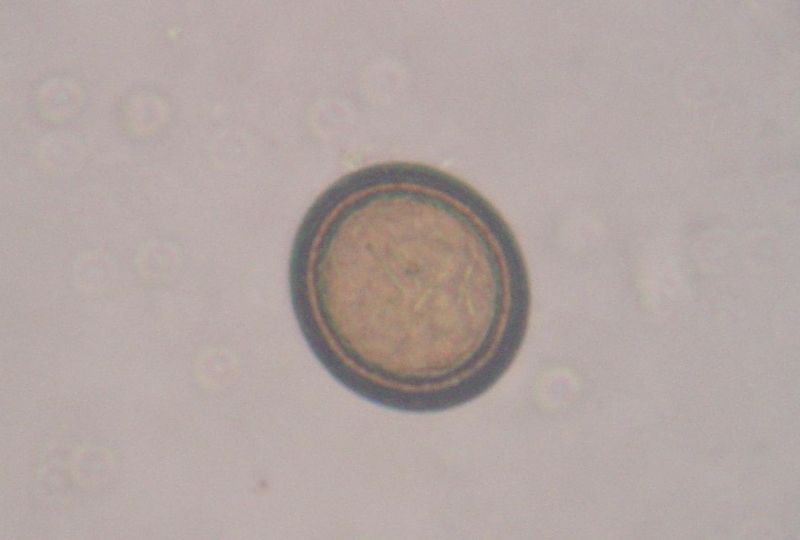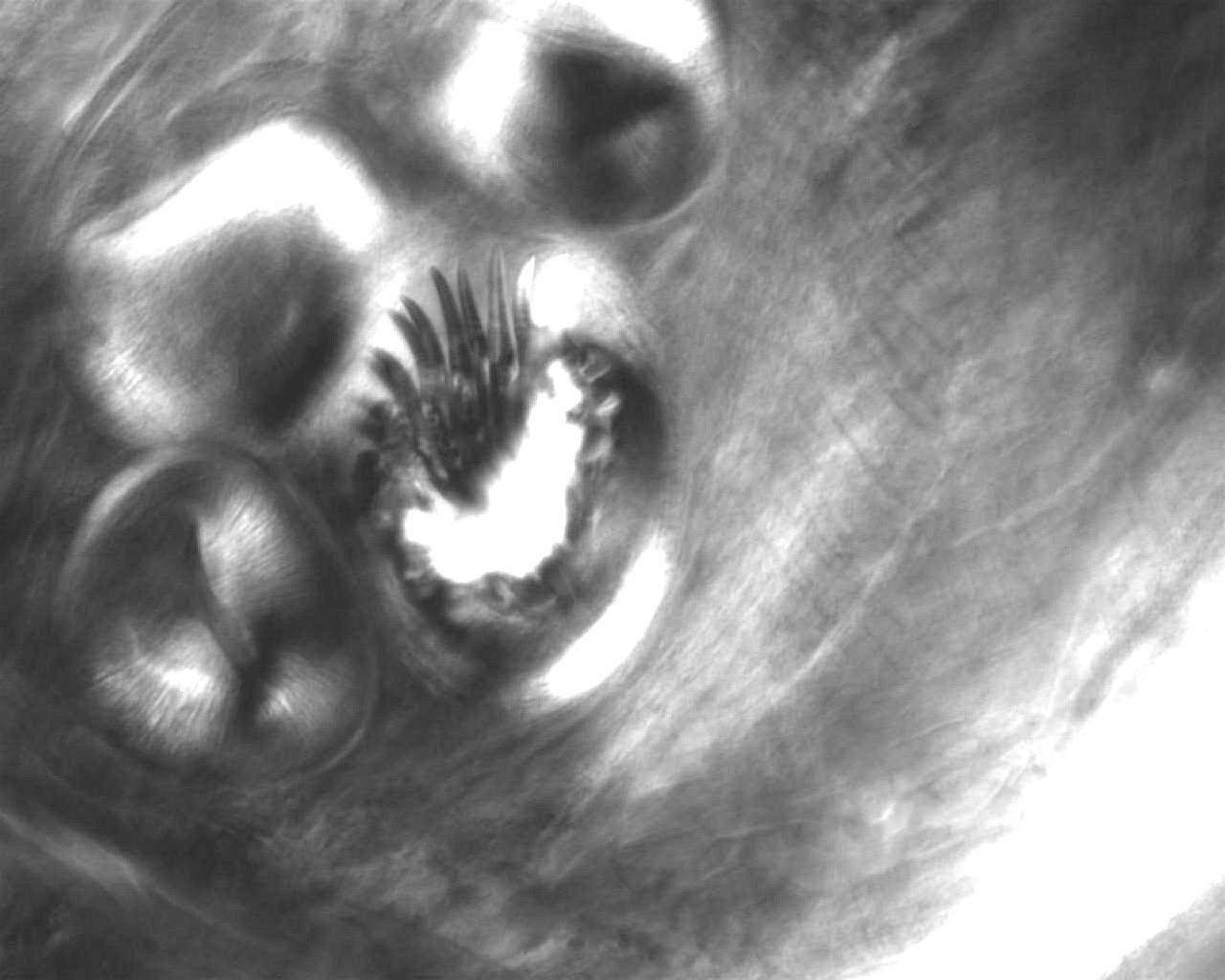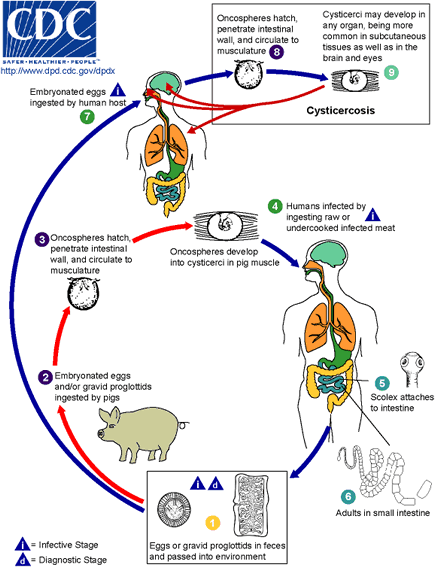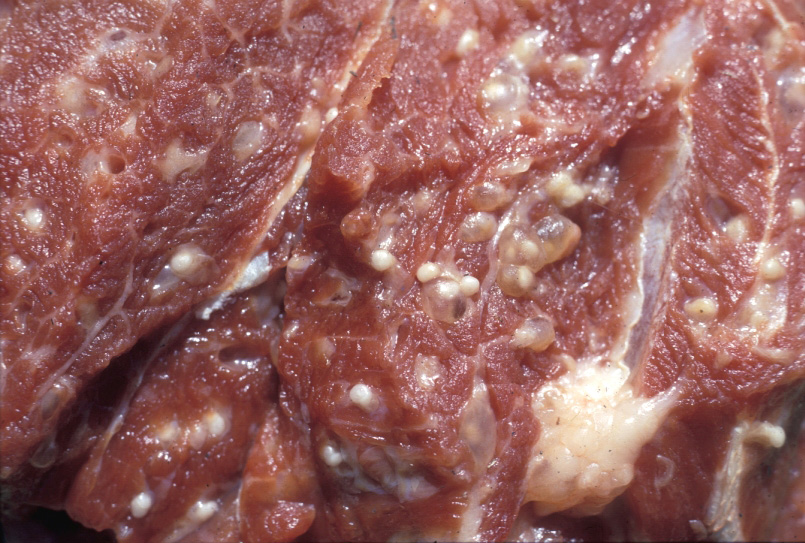Life Cycle
Life cycle of T. solium
-
The definitive host (human) passes eggs and gravid proglottids
from the mature tapeworm in its small intestine through feces.
-
The intermediate host (pig) ingests food contaminated with feces, and therefore, the eggs and proglottids.
-
Oncospheres hatch from the eggs and move through the intestinal wall and into the circulatory system. They migrate via the circulatory system to penetrate muscle cells, and develop into cysticerci (seen below)
-
Humans acquire the parasite by ingesting undercooked pork
-
The scolex attaches to the human’s small intestine and grows into maturity
-
The mature tapeworm releases eggs and gravid proglottids through the human’s feces
Pork infected with Cysticerci
Infection with T. solium in the small intestine is a condition known at taeniasis. During taeniasis, a cysticercus from uncooked meat develops into an adult tapeworm, which attaches to the intestinal wall in the small intestine via its scolex and remains there to grow. Taeniasis is often asymptomatic, with the only sign being the presence of proglottids in the feces. It is easily treatable, usually with the antilhelminthetic drug Praziquantel.
Taeniasis is not the main risk stemming from T. solium infection. Cysticercosis - a result of auto-infection - features far more dangerous pathogenesis in humans.
Auto-infection (labeled as #7-9 in the life cycle above)

-
Rather than the feces infecting pigs, unsanitary conditions lead to the human infecting his or her own food with eggs and gravid proglottids
-
Oncospheres hatch and move thru the intestinal wall, into the circulatory system
-
Oncospheres penetrate cells in all types of human organs, causing cysticerci, similar to those seen in pigs. Below is an close-up image taken of the larval form of T. solium. The hooks and suckers of the scolex are clearly visible in the cysticercus.
-
-
If the cysts remain in tissues for too long, they may die and calcify. This can be problematic in patients suffering from neurocysticercosis. The death of these larval forms is often when patients will experience debilitating pain, seizures, and death.


